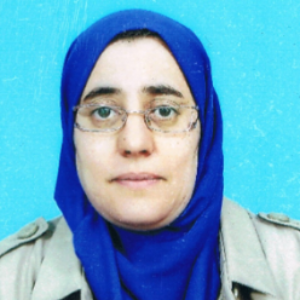Title : Comparative effectiveness of three bio-solids on carbon sequestration in a soil located in a semi-arid region
Abstract:
The challenge of combating global warming is a major one for scientific researchers.An issue of great interest in the scientific community's debate. As a result, several reflections have been made, targeting different ways to implement Carbon Capture and Storage solutions in the soil to reduce greenhouse gas emissions. Carbon is an essential element of greenhouse gases. It becomes imperative to relocate this mineral fromthe atmosphere to the soil and vegetation. Carbon is stored temporarily in the biomass and permanently inthe soil structure. According to authors (Fonseca et al 2011), If this sequestration is accompanied by theimplementation of adequate practices, the reduction of GHGs in the atmosphere will decrease by 30%. Inthis sense, assessments of the carbon storage potential in the soil show that its sequestration is associatedwith agricultural practices. Increasing plant production is an effective means of integrating carbon intoplants via the mechanism of photosynthesis. A two-pronged strategy to meet the needs of the populationin terms of food requirements and to mitigate the emission of CO2 into the air. In Algeria (A North Africancountry), the area of arid and semi-arid regions is very large, if we focus on developing effective measures to improve plant productivity in these regions will contribute significantly to the mitigation of global warming. This objective can only be achieved through soil fertilisation in these regions. This practice, if basedon the use of several biosolids, will give us a vision on the type of effective fertilizer to apply in soils of aridand semi-arid regions. In this aim, that this study was made. It aims to compare and evaluate the additionof three doses of biosolids (Biochar, poultry manure, sewage sludge) on some crucial soil functions (carbonesequestration, soil humidity, Nitrates, pH, EC). The applied doses for each selected biosolids are Do = control without fertilizer, D1 = dose 20g/pot, and D2 = 60g/pot. The experimentation was conducted in agreenhouse in the region of Tébessa, a semi-arid region located in eastern Algeria. The results showed that the soil carbon content improves with the addition of sludge (2.16±0.20%) and biochar (5.9±0.15), while thecontent of manure (2.83±0.10) was lower. Nitrate content also increases more with sewage sludge17.60mg/g soil followed by biochar 7.36mg/g soil. The electrical conductivity of the soil with biochar was 1444±0.002µS/cm, with manure 1369 ± 0.32 µS/cm while with sewage sludge it was 630±0.08. We concludethat biochar has a decisive role in carbon sequestration compared to the other two fertilizers Keywords : Carbon sequestration, biochar, sewage sludge, poultry manure, global warming


